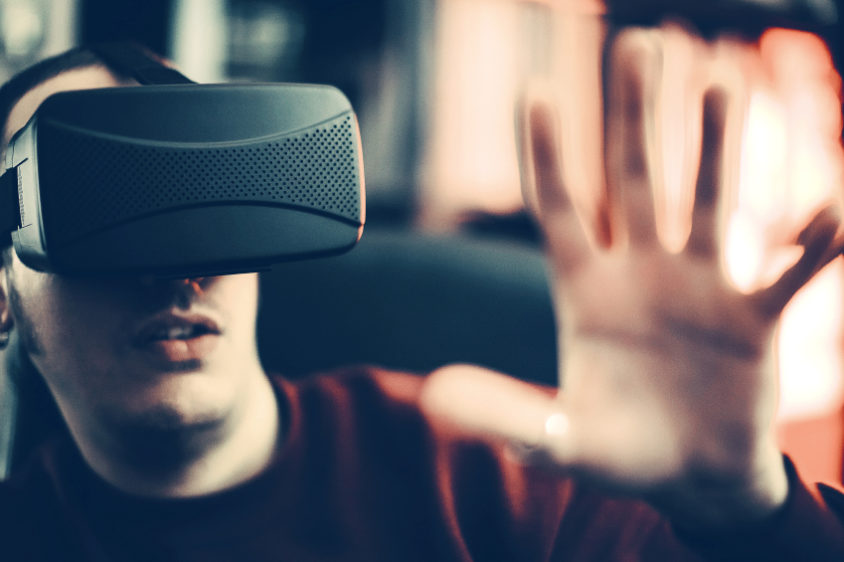M+E Connections

YuMe, Nielsen: VR Has Potential for Marketers, But Also Presents New Challenges
Story Highlights
NEW YORK — Virtual reality (VR) presents marketers with significant potential, but also presents them with new challenges, YuMe researchers said during a briefing Nov. 9, where they presented the findings of a new neuroscience-informed research report the company collaborated on with Nielsen.
VR is expected to be a $5.2 billion market in 2016 and that’s expected to grow to more than $162 billion by 2020, Wenda Harris Millard, president and COO of MediaLink, said during a panel discussion before the report’s findings were disclosed.
The incorporation of VR into content leads to significantly increased emotional engagement by viewers at levels that are “unprecedented,” Paul Neto, YuMe director of research, said at the briefing. Therefore, he said, “the rewards are much higher in these environments.” But “so are the risks,” he said.
For one thing, VR environments are “distracted” environments, he said, adding that, as a result of the “higher risks” involved, it’s imperative to “make sure that we’re developing content that fits within that environment.”
VR also calls for a “new breed of directors” to create VR content – people who will understand how to use new shooting techniques and what content will “port well from a 2D to a 3D environment,” he said. The use of audio and language are also “critical for guiding viewer attention and narrative flow,” YuMe and Nielsen said in a news release announcing the findings.
“There is a lot of opportunity for engagement, for branding, for connecting with the consumer,” Neto said. But it’s also easy for a “critical branding moment” to be missed because it wasn’t placed in the right spot, he said.
VR has “reinforced the need to align content with the right platform to produce optimal consumer engagement,” YuMe and Nielsen said in the news release on the research, which featured content from an entertainment advertiser and the Las Vegas Convention and Visitors Authority (LVCVA). Consumers experienced the content, which originally was developed for highly immersive platforms, in three distinct environments – mobile VR, 360-degree video on a flat screen and flat, 2D TV screens.
Content on VR produced the highest emotional engagement of all the content, “showcasing the rich, exploratory experiences that brands can develop,” the companies said. But it also “reinforced the challenges in connecting consumers with key branding moments in a platform that can encourage self-driven discovery,” they said. The report offers practical advice for advertisers and media companies who are looking to incorporate new immersive and experiential ad formats into their campaigns.
With content optimized for the platform, VR can deliver higher emotional engagement than flat environments, including 2D and 360-degree experiences, the companies said. Among the specific findings: VR elicited 27% higher emotional engagement than in a 2D environment and 17% higher emotional engagement than a 360-degree video on a flat screen; and VR viewers are emotionally engaged 34% longer than when they view the same content in 2D and 16% longer than when they view the same content in 360-degree video on a flat screen.
But the companies said immersive content in VR and 360-degree experiences must balance freedom of exploration and flow to convey the narrative. Content that provides viewers with the opportunity to explore a virtual world can deliver increased engagement, but “storyline flow is critical for effectiveness,” YuMe and Nielsen said. Because viewers are in control of their own experience, attention is easily diverted to aspects in view (scenery, landmarks) apart from the primary storyline, they said.
As part of the research, 150 study participants’ emotional responses were gauged by Nielsen’s neuroscience team, with eye tracking identifying their gaze and eye movements and a biometric monitoring device measuring electrodermal response and heart rate changes, as well as behavioral-coding methods. Participants were monitored while watching a scene from an entertainment advertiser and two short clips from LVCVA on mixology and an aerial helicopter tour of the Las Vegas strip. Consumers watched the clips in three different environments: an immersive VR experience on a headset, a 360-degree video on a tablet, and video on a conventional, flat-screen TV.
“We are not there at that tipping point yet of mass adoption” for VR, Malachi Bierstein, head of sales for digital media at Nokia Technologies, said during the panel discussion. We are, however, seeing the “early stages” of how we will get there, by building scale “across all of the different pieces of the technology puzzle, as well as the creative side and the distribution side,” he said.
One positive sign is that there’s a lot of collaboration happening now between technology, media companies and brands, said Aaron Luber, head of VR/Cardboard partnerships at Google.









